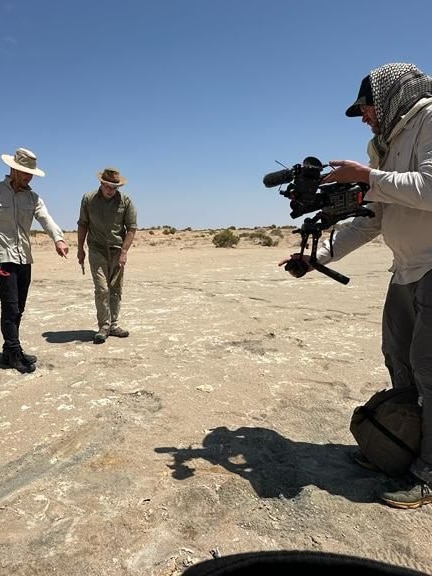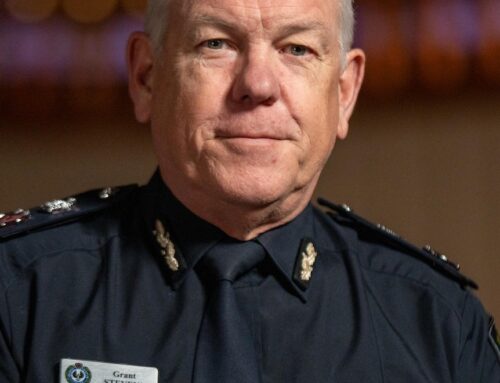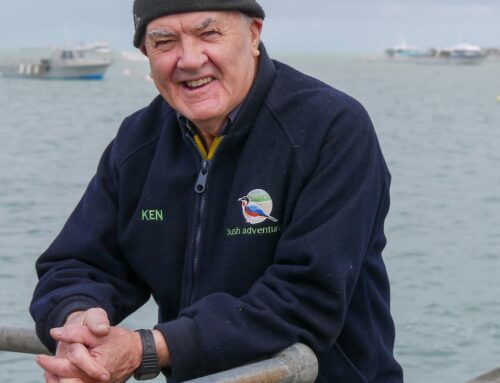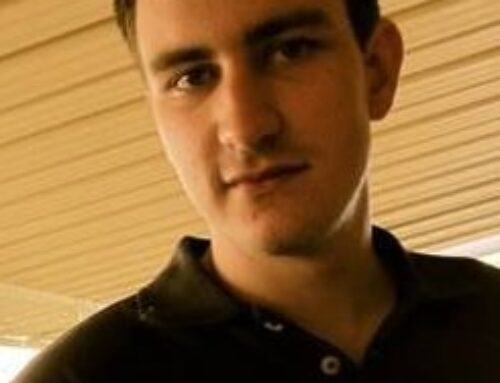Australia has a well-deserved reputation for being home to an abundance of dangerous animals and insects, but rewind, say, 50,000 years ago and our lands were arguably deadlier.
A casual bushwalk back then could have ended with you becoming lunch for Thylacoleo — a marsupial “lion” armed with bone-crushing jaws — or a snack for Megalania — the largest land lizard to have ever walked the planet.
In Catalyst’s two-part special, Megafauna: What Killed Australia’s Giants? the team set out to find some of the answers to why the giants that lived here for millions of years disappeared.
The show involved years of research, weeks and months of filming — including in some of the most inhospitable parts of the country — and working with an Australian A-list Hollywood actor.
This is how we pulled the show together.
Ancient true crime mystery
The mystery of why our megafauna had all but disappeared around 40,000 years ago is, as it turns out, a detective story set deep back in time.
The idea for the show started when Penny Palmer, Catalyst’s executive producer, wanted to tell the story of their demise because it’s an enduring mystery and has been debated for over 100 years.
The hunt for clues by scientists is the palaeontological version of a true crime mystery.
Research for the show began in early 2022 and over the course of several months, development producer Oliver Graham began consulting with approximately 40 scientists from the fields of:
- Palaeontology
- Archaeology
- Climatology
- Geology
- Hydrology
- Biomechanics
- Geochronology (science of working out the age of rocks and fossils)
Through those conversations, we created a narrative arc that would take viewers on the journey scientists have taken (and continue to take), to piece together the evidence to answer: “Who or what dunnit?”
This mass extinction took place when the world was in the grip of an ice age and, while Australia largely remained free of glaciation during that time, the climate was rapidly drying.
So, could climate change be responsible, perhaps caused by the reversal of Earth’s magnetic poles and the subsequent bombardment of the planet by deadly cosmic rays it allowed? Or maybe it was the arrival of the deadliest predator yet — humans?
To understand why 90 per cent of our megafauna suddenly disappeared, we had to go to the places where these creatures lived and died, looking for evidence in the fossils and surrounding environment.
These sites were often in extremely remote parts of Australia.
Fossil hunting
First stop: Lake Callabonna in South Australia. It’s one of the best places in Australia to find megafauna remains.
This remote ancient lake bed is a protected area that sees few visitors.
To reach it, our crew, led by director and director of photography Jeff Siberry, and a team of palaeontologists from Flinders University drove eight hours from Adelaide to Arkaroola, followed by a 30-minute helicopter ride.
“Lake Callabonna is like nowhere else in Australia, or the world really,” Dr Aaron Camens explains.
“It’s a huge salt lake today, but 50,000 years ago there was a lot more water around and literally thousands of megafauna animals got stuck in the mud.
“What this means is that we see, rather than just one or two bones, complete skeletons preserved where the animal got stuck.
“And because they’re stuck in the mud, they’re essentially partly buried as they die, which means that the fossilisation detail is much higher.
“That is something that we did not see anywhere else in Australia for any of these species.”
But finding clues here is a race against the clock.
The shifting sands continually reveal new megafauna remains, while earlier discoveries are lost forever, eroded by the harsh desert conditions.
However, as luck would have it, on this visit we were in the right place, at the right time.
Scientific ‘smoking gun’
Dotting the landscape was a clear fossilised trackway — the first of its kind ever discovered.
“This is pretty bloody good,” remarked Aaron in a very understated way.
Before him lay the evidence scientists had been searching for — confirmation that some of our extinct giant short-faced kangaroos from the Pleistocene era walked bipedally rather than hopped.
When Tim Ziegler, the collection manager for vertebrate palaeontology from Melbourne Museum, saw the footage, he was taken aback.
“To learn that there are preserved striding trackways of short-faced kangaroos in the Lake Eyre Basin in South Australia, that’s incredible,” he said.
“This is the smoking gun that proves these giant kangaroos weren’t hoppers, they were striders.”
“People wait lifetimes to see evidence like this. We see proof with our own eyes because we can walk in their footsteps.”
For the Catalyst crew, it was a rare opportunity to film a scientific discovery as it unfolded.
Over the coming weeks and months, our investigation saw the crew travel to 18 locations.
We headed up as far as the Top End to search for clues hidden in Kakadu’s rock art, across the ditch to explore the theory of a polar reversal, and down south to Naracoorte Caves National Park — recognised by UNESCO as one of the world’s best fossil sites, containing a record spanning more than half a million years.
Museums in Victoria, South Australia and Queensland also allowed us behind the scenes to film their impressive megafauna collections.
Bringing the animals to life
Creating the most scientifically accurate animations involved several rounds of feedback between Matt Drummond, our VFX artist, and multiple scientists.
The process began by sending Matt drawings along with scientific papers detailing the morphology of the animals for him to use as a guide to build the “rigging” or skeleton of the animal.
Once those had been checked by the scientists, musculature and skin were added in a process called sculpting.
Without evidence, their external appearance remains open to interpretation, but for our animations, we looked towards modern relatives to inform the colour of the fur or feathers.
The final stage is where the fun part begins.
Director Jeff Siberry worked with Matt, who could place the animals in specific environments so Jeff could direct the action for each scene.
He was able to choose everything from the direction of the light source, the time of day, the camera placement, right down to which lens to use.
This scene shows how all of those elements come together to create the tension before a hunt.
With our story gathered and the animations complete, our final step was to find someone who could breathe life into these long-lost creatures; someone who could convey the full drama of their demise.
We were thrilled to engage an Australian A-list Hollywood actor to be that voice.
The show is narrated by Hugh Jackman and the opportunity to work with such an accomplished actor was extraordinary.
He’s based in New York and so, with the help of a Zoom link for the Australian team to patch in and a fortuitous holiday to NYC of one of the show’s editors, Philippa Rowlands — we recorded history.
Stream both episodes of Megafauna: What Killed Australia’s Giants? on ABC iview now, or watch episode two tonight on ABC TV at 8pm.




